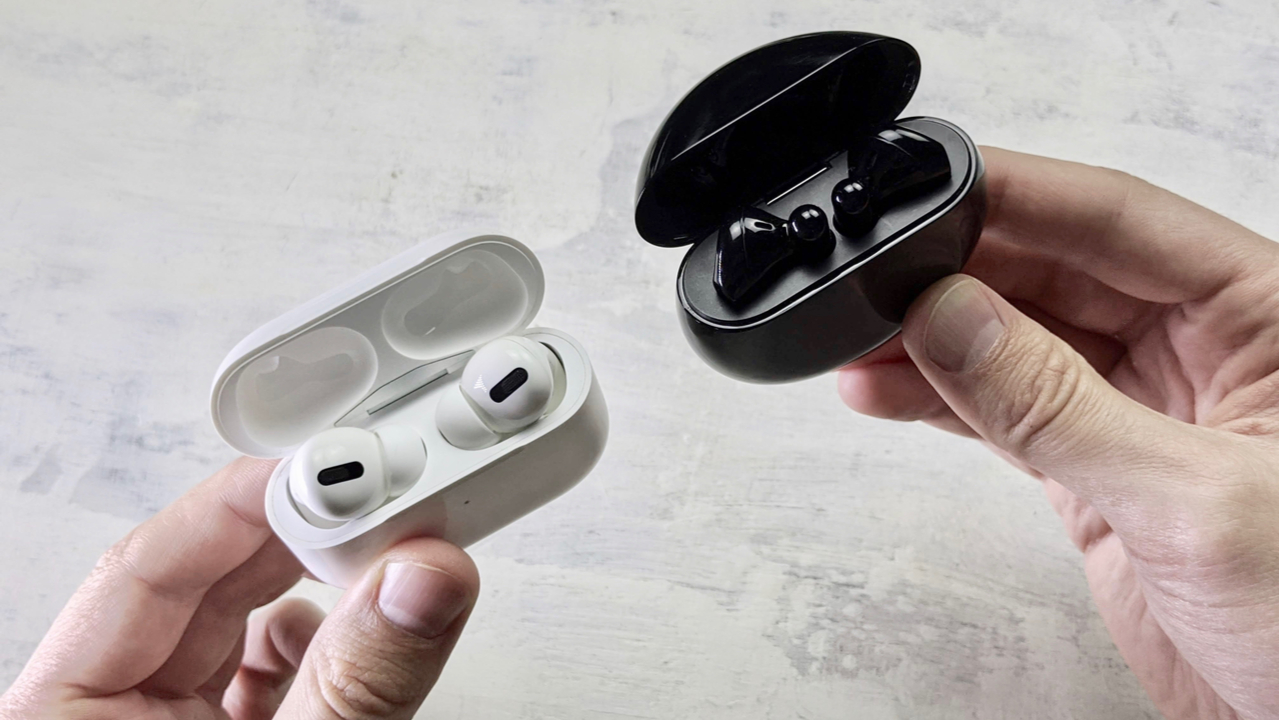Why 2020 is the year you should finally buy true wireless earbuds
True wireless earbuds are coming into their own

Since the first true wireless earbuds were unveiled in 2015 by Japanese electronics company Onkyo, the fledgling form factor has improved in both audio quality and performance – and CES 2020 showed that true wireless technology might finally be ready for the bigtime.
In the past, true wireless earbuds were riddled with connectivity issues, poor audio quality, and bulky designs – however, based on what we saw at CES this year, the best true wireless earbuds of 2020 will be able to compete with wired headphones on a much more level playing field.
We finally saw the kind of specs we can expect from true wireless earbuds in 2020; from noise cancellation to long-lasting battery life, so here are three reasons why, if you’ve been holding off, you should consider a pair of untethered earbuds to enjoy your tunes every day.
- These are the best true wireless earbuds of 2020

More choice when it comes to price
For a while now, true wireless earbuds have typically cost more than their wired counterparts – but CES 2020 showed us this form factor doesn't have to come at a premium.
The new JLab Go Air True Wireless Earbuds are a great example of the growing accessibility of cord-free listening; at just $29 / £29 (about AU$40), they're nearly eight times cheaper than the current class-leading model, the Sony WF-1000XM3.
Do they sound as good as their more expensive rivals? Absolutely not, but they're filling a gap in the market for cheap true wireless earbuds from a trusted audio brand.
At the other end of the price scale, we're also seeing some incredibly high-spec (and incredibly expensive) models entering the market.
Sign up for breaking news, reviews, opinion, top tech deals, and more.
Klipsch's latest model, the T10 True Wireless Earbuds were announced at CES, with a recommended retail price of $649 (around £490 / AU$930).
Why so expensive? Well, these earbuds are packed to the brim with every single top-end piece of tech available in the wireless audio market, including noise cancellation and built-in artificial intelligence, which brings us on to the next true wireless trend for 2020...

Artificial intelligence and gesture controls
CES 2020 saw a number of brands announce true wireless earbuds with built-in artificial intelligence - let’s explain what that means.
The aforementioned Klipsch T10 have their own operating system with "embedded artificial intelligence," which will allow for voice-controlled music playback without the need for a third-party voice assistant like Google Assistant or Alexa to be installed on your smartphone.
Similarly, the TicPods 2 Pro come with Mobvoi's own AI tech built in, called TicHear and TicMotion.
TicMotion is the technology that allows you to control your music and calls by moving your head, thanks to built-in motion sensors – that means you can nod your head to accept a call, or shake to decline.
While the TicPods’ gesture controls are limited to calls, the adoption of this technology points to a future where we’ll be able to control far more with simple movements, including music playback and perhaps even the way our earbuds sound, with gesture-controlled equalizer settings.
Until now, hands-free control of our true wireless earbuds has been limited to giving vocal commands to the voice assistants built into our smartphones – and for anyone who's on the shy side, speaking aloud in public isn't an attractive proposition.
Gesture controls like we've seen in the TicPods 2 Pro (even if we felt they weren't as effective as they could be) could allow for more organic interactions with our earbuds, making them feel more like a natural extension of ourselves.
Whether models like the Klipsch T10 and the TicPods 2 Pro will pave the way for a world where everybody views their true wireless earbuds in the same way we view our smartphones remain to be seen – but with AI, our regular ‘dumb’ headphones are set to become far smarter.

Noise cancellation as a given
We’re not saying that there haven’t been any good true wireless headphones already; for example, the Sony WF-1000XM3 have been our top buds since their release in 2019, and the Apple AirPods Pro have been a massive improvement on the AirPods Classic (AKA among the highest-selling true wireless earbuds in the world).
What's set to change in 2020 and beyond, however, is that noise cancellation will become expected beyond a certain price point – we’d suggest you don’t buy a pair of non noise-cancelling true wireless headphones beyond $100 / £100 / AU$150.
This once-premium feature is already turning up in cheaper true wireless earbuds, like the $99 / £119 / AU$209 TicPods 2 Pro, and while its effectiveness may vary between different models, this trend is only set to continue.
It makes the decision by Jabra to not include this capability in its recent Elite Active 75t headphones all the more surprising. The rumored Samsung Galaxy Buds Plus are also reportedly eschewing noise cancellation, which could prove a missed opportunity for the Apple rival.
On the other hand, just as audiophiles tend to avoid the 'closed-off' sound of noise-cancelling headphones, we may see an increase in the number of natural-sounding true wireless earbuds, like the Cambridge Audio Melomania 1 – and these buds won't have noise cancellation built-in, instead striving for the wide soundstage of open-back headphones to, again, bring you closer to the audiophile sound.

Better connectivity, longer battery
Thanks to innovations in wireless connectivity, like aptX Low Latency, which reduces the lag between audio and video when using wireless earbuds to watch TV and play games, the best wireless headphones of 2020 rarely experience the frequent connection dropouts of their predecessors.
Announced at CES was Bluetooth LE, the latest standard in wireless technology. Bluetooth LE is a particularly interesting development; using a new codec called LC3, this technology is set to improve sound quality and battery life, as well as allowing for hundreds of devices to connect to a single source.
For the average listener, Bluetooth LE will mean that the five-hour battery life we've become accustomed to (we're looking at you, Apple AirPods) will become a thing of the past, with 10 hours or more becoming the standard.
That's because Bluetooth LE uses less power than previous wireless standards – and based on the adoption rates of previous standards like Bluetooth 5.0, it's only a matter of time before we see Bluetooth LE advertised on the packaging of true wireless earbuds.
It may take a few years before we see the majority of wireless headphones using Bluetooth LE however; after all, Bluetooth 5.0 was released in 2016, and it’s only in the last couple of years that the standard has become widely adopted by headphone manufacturers.
Still, innovations like this, along with specs like noise cancellation, artificial intelligence, and gesture control make it clear that true wireless earbuds are moving beyond basic portable audio devices – and these are the features you should be looking for if you decide that 2020 is the year you finally dip your toes into the world of true wireless.
- These are the best headphones of 2020

Olivia was previously TechRadar's Senior Editor - Home Entertainment, covering everything from headphones to TVs. Based in London, she's a popular music graduate who worked in the music industry before finding her calling in journalism. She's previously been interviewed on BBC Radio 5 Live on the subject of multi-room audio, chaired panel discussions on diversity in music festival lineups, and her bylines include T3, Stereoboard, What to Watch, Top Ten Reviews, Creative Bloq, and Croco Magazine. Olivia now has a career in PR.